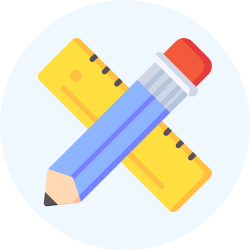Short Questions: Simple Machine | Eureka Plus Class 5: Book Solutions, Notes & Worksheets PDF Download
Q1: What is a force?
Ans: A force is something that can push or pull an object. It can make an object move, stop it from moving, or change its direction. Forces use energy to work.
Q2: When is work considered done?
Ans: Work is done when a force causes an object to move. For example, if you push a toy car and it rolls, you have done work. If you push but the car does not move, then no work is done.
Q3: What are simple machines?
Ans: Simple machines are tools that help us do work easier. They require less effort to do tasks. Examples include levers, pulleys, and inclined planes.
Q4: Can you name the six types of simple machines?
Ans: The six types of simple machines are: 1) Inclined Plane, 2) Screw, 3) Wedge, 4) Wheel and Axle, 5) Pulley, and 6) Lever.
Q5: What is an inclined plane?
Ans: An inclined plane is a flat surface that is tilted. It helps move things up or down with less effort. Examples include ramps and slides.
Q6: How does a screw work?
Ans: A screw has grooves that act like tiny inclined planes. These grooves help the screw move into materials like wood with less effort. They also help hold things tightly together.
Q7: What is a pulley used for?
Ans: A pulley is used to lift heavy things. It has a wheel with a rope around it. When you pull down on the rope, the load goes up, making it easier to lift.
Q8: What is a lever?
Ans: A lever is a bar that can move around a point called the fulcrum. It helps lift things. For example, using a spoon to open a lid is using a lever.
Q9: What are the three types of levers?
Ans: The three types of levers are:
(1) First Class Lever, where the fulcrum is in the middle;
(2) Second Class Lever, where the load is in the middle; and
(3) Third Class Lever, where the effort is in the middle.
Q10: Can you give an example of a complex machine?
Ans: A complex machine is made of two or more simple machines. An example is a bicycle, which has wheels, levers, and pedals working together to help us ride.
















